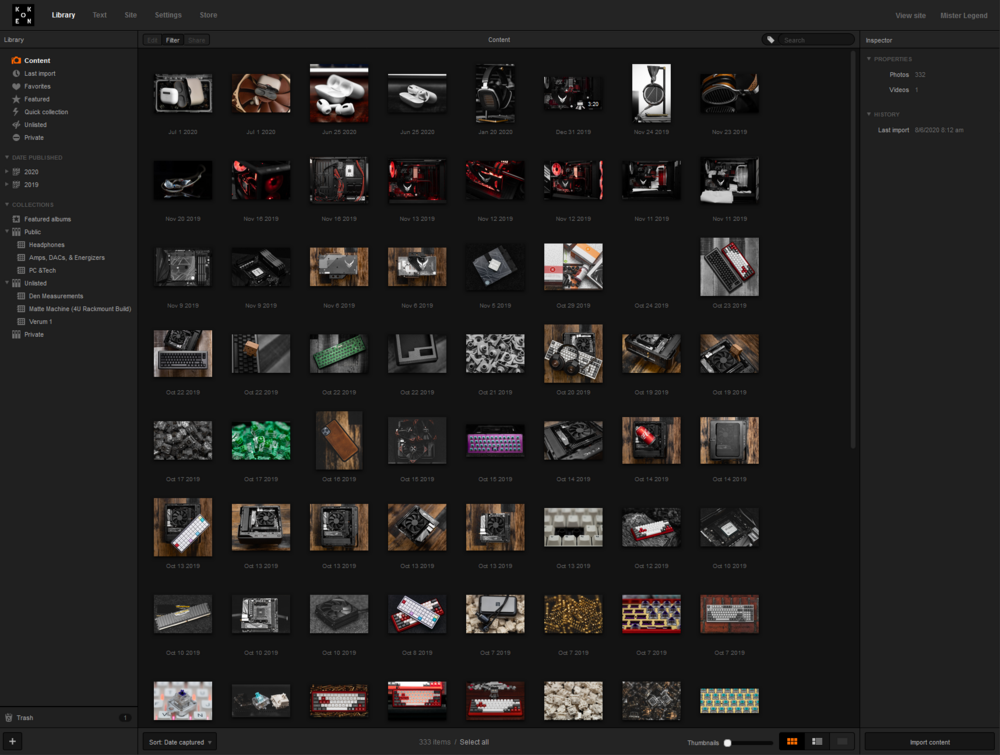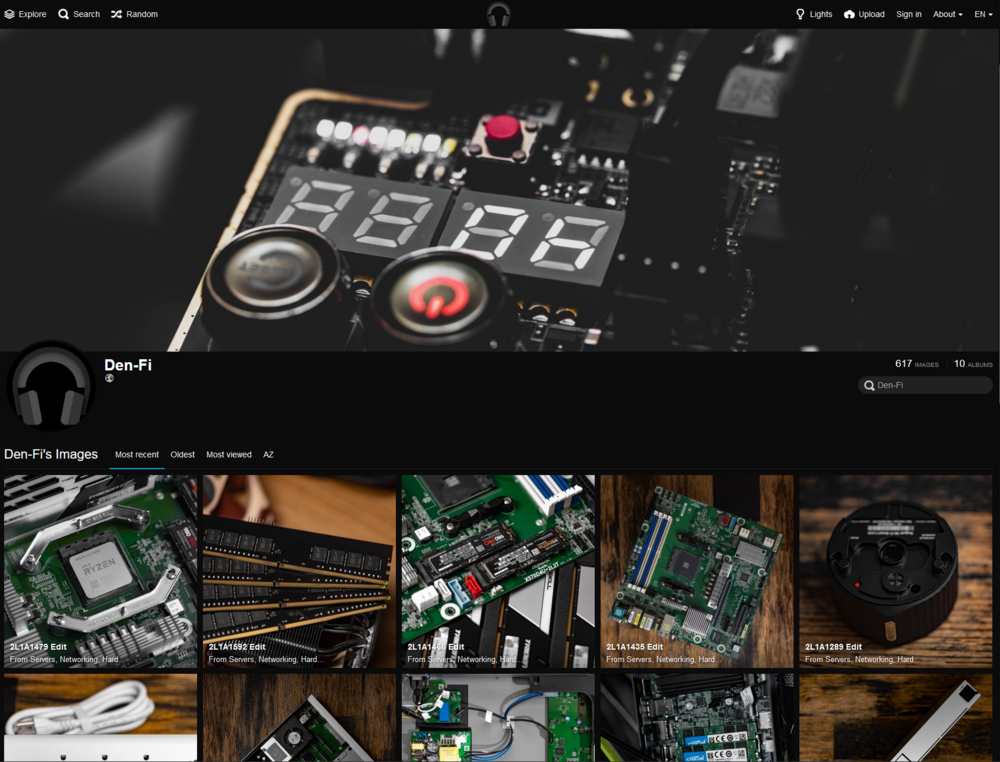Sometimes you just have let go…
I am a long-time user of Koken, A photography CMS that integrates with Lightroom to allow you to publish albums directly to it via API. (it powers https://den-fi.com/) I can keep my libraries in sync with tags and descriptions pulled from Lightroom. That feature alone is why when the original maker sold it, I did not jump ship. It was free w/ the option to pay for plugins and themes if you chose to, so I figured it had some sustainability. That and every other photography focused CMS is entirely too plain or is a Wordpress plugin. I would sooner stab myself in the foot than use Wordpress. Wordpress is bad and you should feel bad if you use it.
Oh… I’m getting off track.
Anyway, they new company NetObjects seemed to be chugging along at the same pace with new updates, features, and themes. They even started to offer hosted solutions. Ah! This was the sustainability I had been worried about. My wishful thinking got the better of me and I never looked behind the curtain until I had a problem. I created a support ticket, and it was closed with no answer. I created another and they replied asking to send them an email with my login credentials. I sent the email but decided I would wait until I heard back from them rather than leaving a set of credentials floating around. I never heard back.
This was nearing the end of 2017. I logged into the support portal again to poke around, and it was just a bleak sea of unanswered tickets. Users who had been trying to pick up the slack and help other users had abandoned ship, and there was never any word from Net Objects except to email them, which they were never going to return. The same with Twitter and Facebook. Only ever people wanting to know if they were still alive. Shortly after, I lost access to themes and plugins I had paid for. Their store backend went poof. The Zendesk support portal went down next, then finally the download links died. Some gracious user uploaded everything to Github, but it’s not like anything is actively supported.
Users have been begging them to release it to the open source community, but it has fallen on deaf ears. The original creator of the project even tried reaching out to them, but to no avail. So, what is one to do? I have been trying endless CMSes to replicate even 50% of what Koken could do, but it was just so far ahead of its time. I’ve tried Piwigo, Lychee, definitely not Wordpress because I have self-respect, ZenPhoto, CopperMine, Cheverto, Photato, PhotoPrism, fgallery, and countless others.
My last run-in w/ Chevereto was in 2018 and it did not cut it. Not because it was not good, but because I had too much hope that Koken would come back from the dead. Now in 2020, past all the stages of mourning Koken’s death, I was ready to try again. This is thanks in part to Docker. Being able to throw up an instance of something in about 5 mins really streamlined my testing workflow.
With fresh eyes and realistic expectations, I can now say it’s good! I still miss my Lightroom integration, but the reality is, I export to folders anyway when I make build logs. It is not too dissimilar a workflow for me to adjust across all of my different galleries. It was A LOT of work, but… what isn’t these days? So up went https://den.vc/ last night, and I am pleased with the result.
Chevereto is a community photo sharing app with the ability to run as a personal site. Navigation is a bit clunky. By default, it brings you to a page with a dump of all photos, ordered by date. There is no way to change this to default to a set of albums. The developer is highly skilled, but from his replies to users in the forums, it sounds like he will not implement this kind of sorting. This is kiiiiiiiiiiiiiiind of a deal-halter for me, but we shall see if I can get used to it with this proof of concept site. It will be quite some time before I can move over all my galleries, and my Koken installs are not fully broken (yet). Any new projects I do will use Chevereto. It is a brilliant piece of software, and I’m glad that I revisited it.
Note: I pulled an all nighter getting Chevereto up and running, so there may be things I gripe about that I just haven’t looked hard enough for. I was pretty confident that between last time and this time I had the same issues though.
Pros:
- Similarly modern presentation to Koken
- Easy to deploy in a container in just a few minutes
- Responsive layout
- Quick uploading w/ parallel uploads of up to 5 images
- Intelligent and dynamic handling of image scaling
- Fast when loading images, even over slow connections
- Ability to be both community driven or personal
- VERY good documentation
- Free Community Edition
Cons:
- Sorting limitations
- Inability to hide filenames, which harms aesthetics
- Inability to batch title/tag photos (you can do this in Lightroom then re-export)
- Laborious settings menus
- Very limited text page functionality

